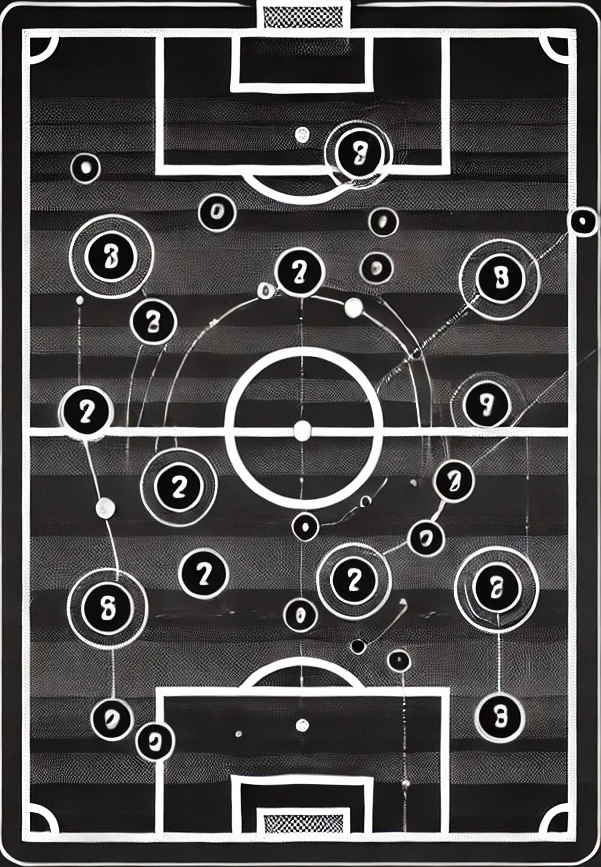The Emergence of Tactics in Football: A Game-Changing Evolution
Football, often referred to as « the beautiful game, » was once viewed as a display of individual skill and raw talent. However, as the sport evolved and its demands grew, tactics emerged as a cornerstone, transforming football into a sophisticated chess match on grass. This article explores the emergence of tactics in football and their impact on the modern game.

What Are Tactics in Football?
Tactics refer to the collective organisation of players on the pitch to maximise their chances of winning. They include elements such as:
- Formations (e.g., 4-4-2, 3-5-2, 4-3-3),
- Defensive strategies (man-to-man marking, high pressing),
- Offensive patterns (counter-attacks, structured attacks),
- Game pace management.
The aim is to harness a team’s strengths while exploiting the weaknesses of the opposition.
The Early Days of Tactics: A Structured Game
In its infancy, football resembled a chaotic scrum, with most players clustering around the ball. It wasn’t until the late 19th century that teams began to structure their play with the introduction of early formations like the famous 2-3-5, which prioritised attack and sought to maximise goal-scoring opportunities.
The 20th Century Evolution: From Physicality to Collective Intelligence
As rules evolved and visionary coaches emerged, football underwent a dramatic transformation. Key milestones include:
The Swiss Verrou (1930s):
Karl Rappan popularised a defensive approach by introducing a sweeper to support the backline.
Italian Catenaccio (1950s-60s):
An evolution of the Verrou, this ultra-defensive system, associated with Helenio Herrera, focused on defensive solidity and lightning-fast counter-attacks.
Total Football (1970s):
Revolutionised by Ajax Amsterdam and the Dutch national team, this style emphasised positional interchangeability, requiring versatile players and fluid team play.
Modern Football: The Era of Fine Margins
Today, tactics dominate football. Managers like Pep Guardiola, Jürgen Klopp, and Diego Simeone are celebrated for their ability to adapt systems to specific matches. Modern innovations include:
- High-intensity pressing: Forcing opponents into mistakes.
- Transition management: Quick reactions after winning or losing possession.
- Video analysis: Studying intricate game details to optimise performance.
The Impact of Tactics on the Game
- A More Strategic Sport: Teams must balance attacking and defensive priorities to remain competitive.
- The Rise of Specific Roles: Positions like the « false nine » or attacking full-back have emerged to meet tactical needs.
- Changing Expectations for Players: Modern footballers must not only possess talent but also be tactically astute.

